Aaron Barr believed he had penetrated Anonymous. The loose hacker collective had been responsible for everything from anti-Scientology protests to pro-Wikileaks attacks on MasterCard and Visa, and the FBI was now after them. But matching their online identities to real-world names and locations proved daunting. Barr found a way to crack the code.
In a private e-mail to a colleague at his security firm HBGary Federal, which sells digital tools to the US government, the CEO bragged about his research project.
"They think I have nothing but a heirarchy based on IRC [Internet Relay Chat] aliases!" he wrote. "As 1337 as these guys are suppsed to be they don't get it. I have pwned them! :)"
But had he?
"We are kind of pissed at him right now"
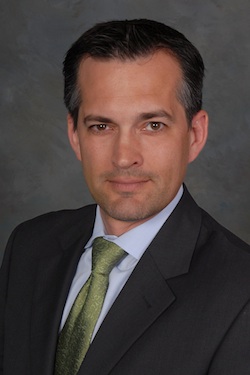
Barr's "pwning" meant finding out the names and addresses of the top Anonymous leadership. While the group claimed to be headless, Barr believed this to be a lie; indeed, he told others that Anonymous was a tiny group.
"At any given time there are probably no more than 20-40 people active, accept during hightened points of activity like Egypt and Tunisia where the numbers swell but mostly by trolls," he wrote in an internal e-mail. (All e-mails in this investigative report are provided verbatim, typos and all.) "Most of the people in the IRC channel are zombies to inflate the numbers."
The show was run by a couple of admins he identified as "Q," "Owen," and "CommanderX"—and Barr had used social media data and subterfuge to map those names to three real people, two in California and one in New York.
Near the end of January, Barr began publicizing his information, though without divulging the names of the Anonymous admins. When the Financial Times picked up the story and ran a piece on it on February 4, it wasn't long before Barr got what he wanted—contacts from the FBI, the Director of National Intelligence, and the US military. The FBI had been after Anonymous for some time, recently kicking in doors while executing 40 search warrants against group members.

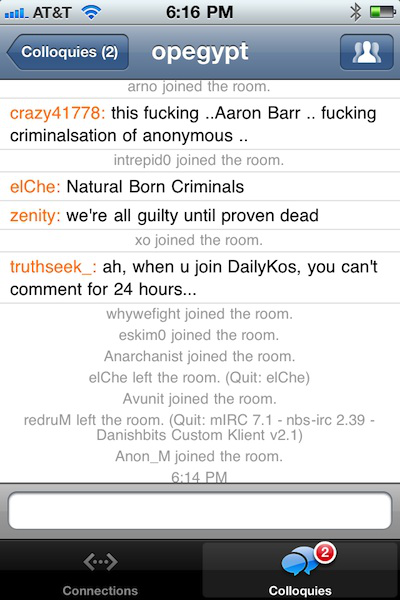
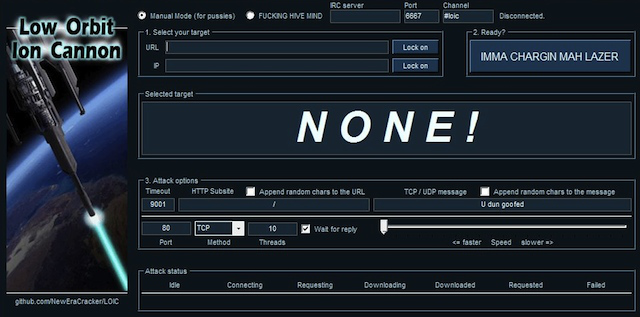

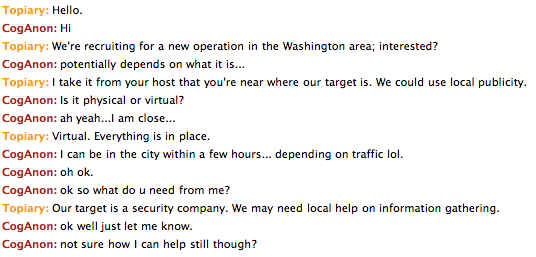
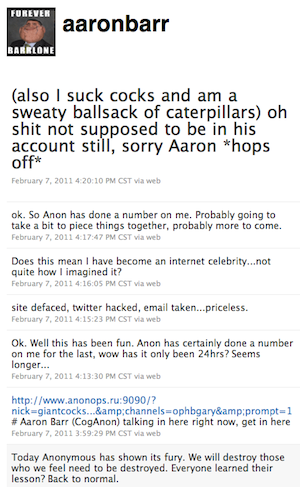
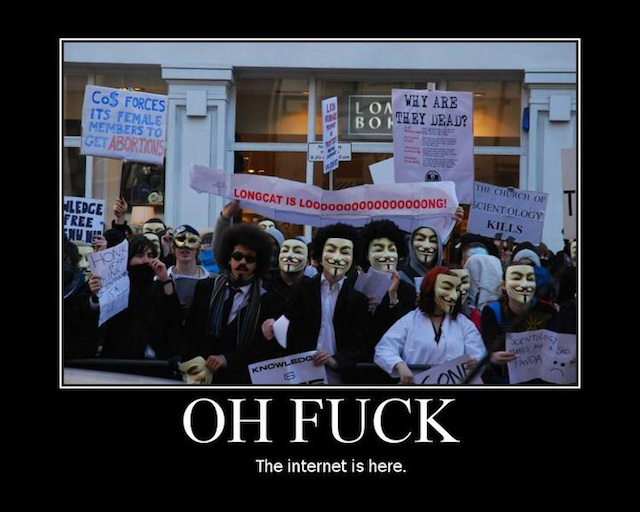

 Loading comments...
Loading comments...
